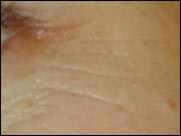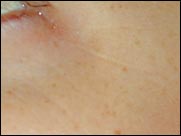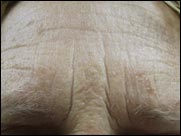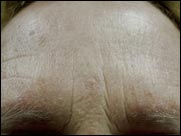Laser Rejuvenation

Laser Genesis Skin Therapy is an innovative, technologically advanced way to promote vibrant and healthy looking skin in men and women. Now you can have a youthful appearance by treating those conditions that are typically associated with premature signs of aging and sun damage, such as excessive redness, large pores, uneven texture, and fine line wrinkles.
The Laser Genesis difference.
The Laser Genesis procedure utilizes laser technology to safely, discretely and effectively treat uneven skin texture, scars, large pores, and diffuse and excessive redness. Laser Genesis is a comfortable, non-ablative, non-invasive form of skin therapy. You can expect to see subtle yet consistent results after each treatment, without unwanted side effects such as bruising or excessive skin irritation. Your therapy can be performed in a relaxed, comfortable manner without the use of general or local anesthesia, gel or cream.
What areas can be treated?
Laser Genesis Skin Therapy patients report excellent results over their entire faces and necks. Additionally, practitioners may suggest this therapy to diminish recent scars on other parts of the body.
What is diffuse redness?
Diffuse redness is a general appearance of facial redness, such as rosy cheeks. This condition is caused by dilated capillaries, resulting in an appearance of general redness, not discrete, well-defined vessels. The most commonly affected areas are the nose, forehead and cheeks. Diffuse redness is often associated with a condition called rosacea and it can be hereditary. Laser Genesis therapy will help your appearance by gently treating and reducing this condition.
What does the procedure feel like?
Patients often describe the treatment as relaxing and therapeutic. You will experience a gentle warming of your skin’s surface during the procedure as the laser handpiece is moved back and forth about 1/2 inch above your skin. You can expect to immediately return to normal activities, utilizing sunscreen if participating in outdoor activities.
How does Laser Genesis work?
By gently heating the upper dermis well below your skin’s surface, Laser Genesis Skin Therapy stimulates collagen regrowth.
What can I expect before the treatment?
You will not need to apply any gel, anesthetic cream or ice prior to treatment. Before the actual Laser Genesis treatment, you will be asked to remove your make-up or moisturizers and, in some cases, you may be asked to shave the area to be treated so as not to interfere with the laser therapy. Your physician will review and assist with all pre-treatment requirements.
How many treatments will I need?
The treatment results are often subtle. On average, you may require four to six treatments in order to achieve the results you are looking for. Every patient’s condition and needs vary. For more information about your expected results or the number of treatments necessary, consult your physician.
What are the possible side effects?
Although most patients report few if any side effects, the most common is a slight redness that disappears within a few hours of treatment. Consult your medical professional for complete information about the benefits and risks of treatment.
What kind of textural improvements can you expect with Laser Genesis Skin Therapy?
Over the course of four to six treatments, Laser Genesis therapy can help restore your skin’s youthful glow and appearance by smoothing out uneven textures caused by aging, sun damage or scars. You will see a more creamy, healthy complexion as large pores are reduced in size, and minor imperfections are diminished. The individual treatment results are subtle, but the overall effect of multiple treatments can be quite dramatic.
Before*
After*
Before*
After*
* Disclaimer: Individual results may vary. The statements on this website and all affiliates have not been evaluated by the FDA. Products mentioned on this website are not intended to diagnose, treat, cure or prevent any disease and do not replace medical advice. Advice on treatment or care of an individual patient should be obtained through consultation with a physician or trained health care practitioner who has examined that patient or is familiar with that patient's medical history.




